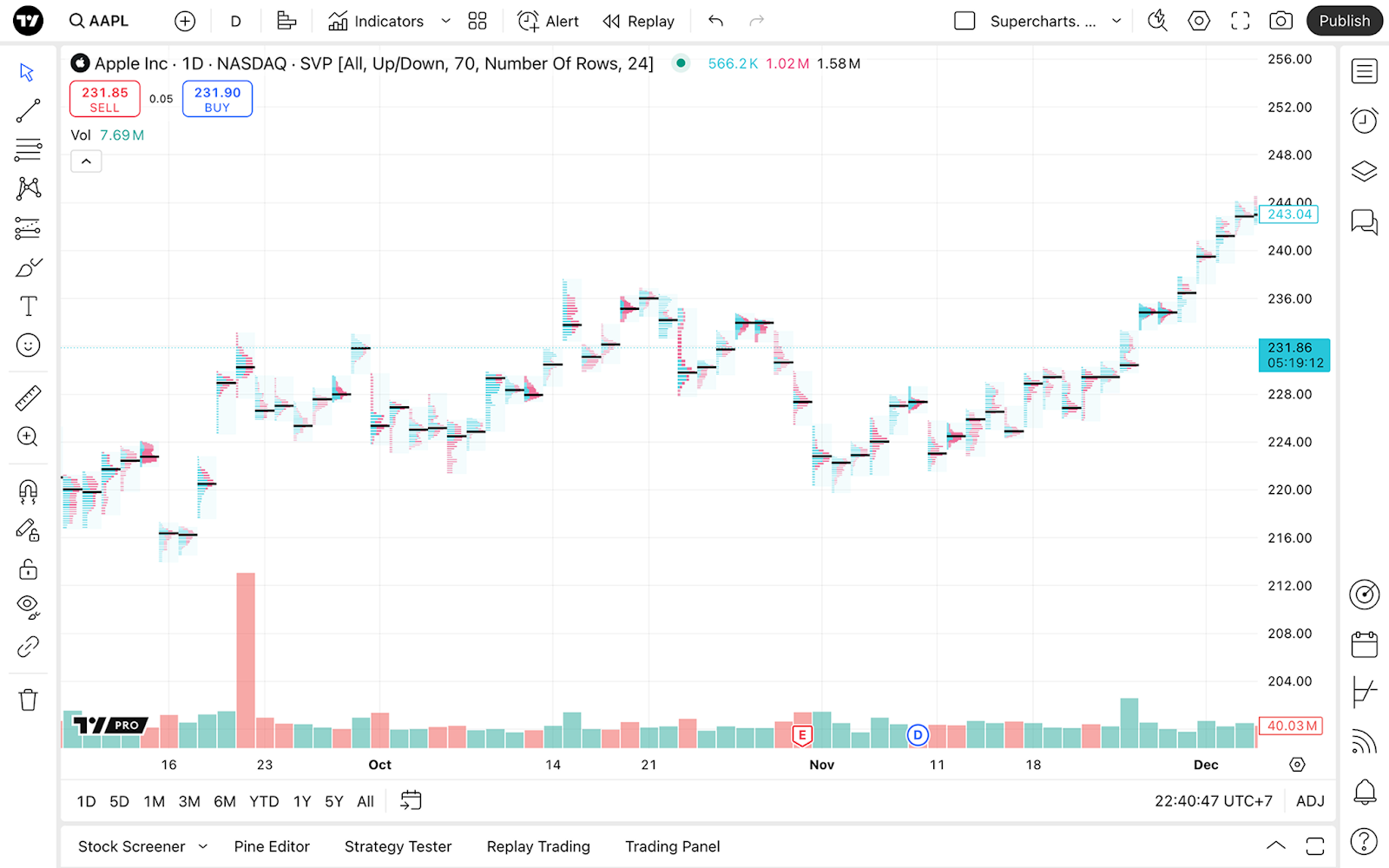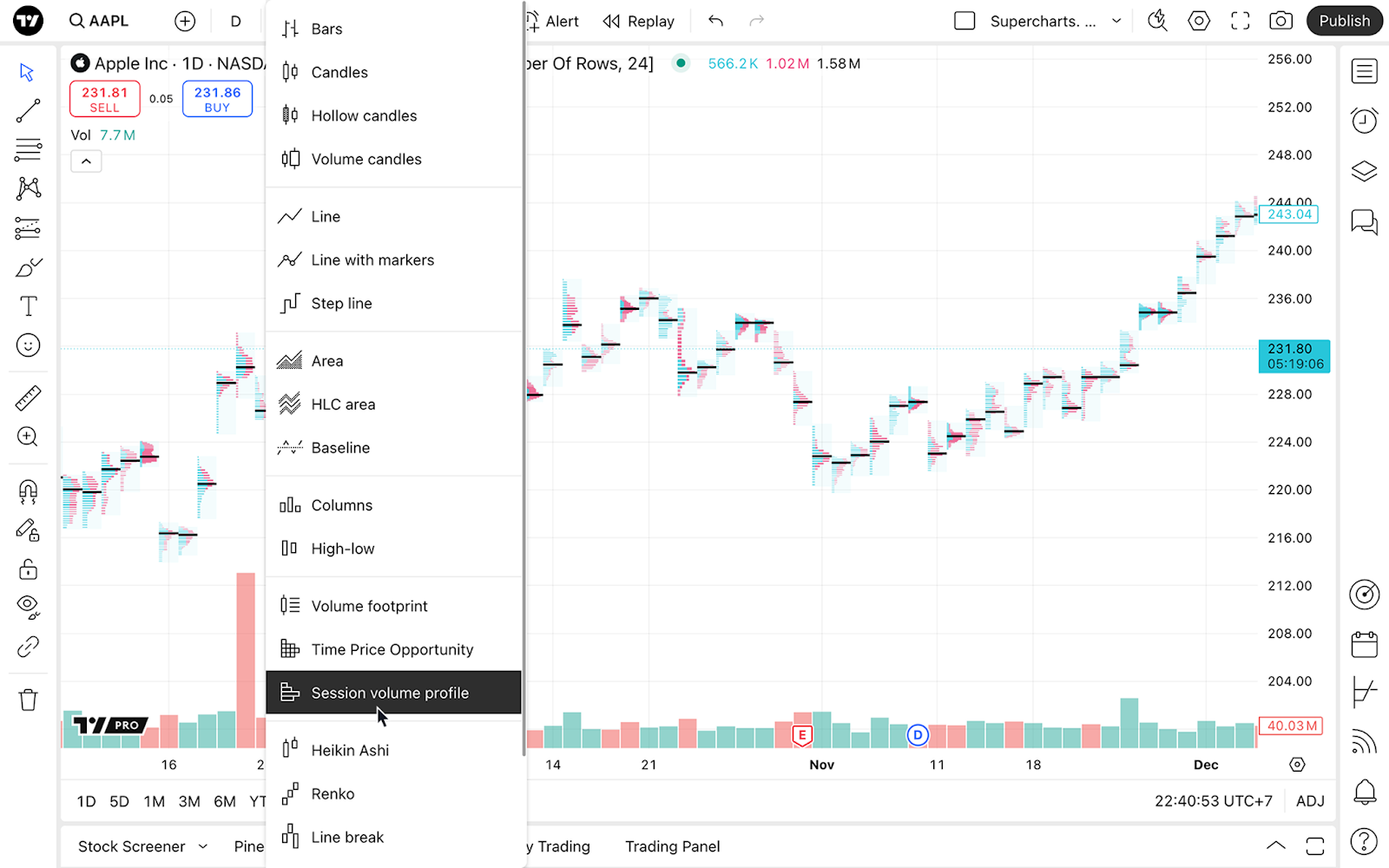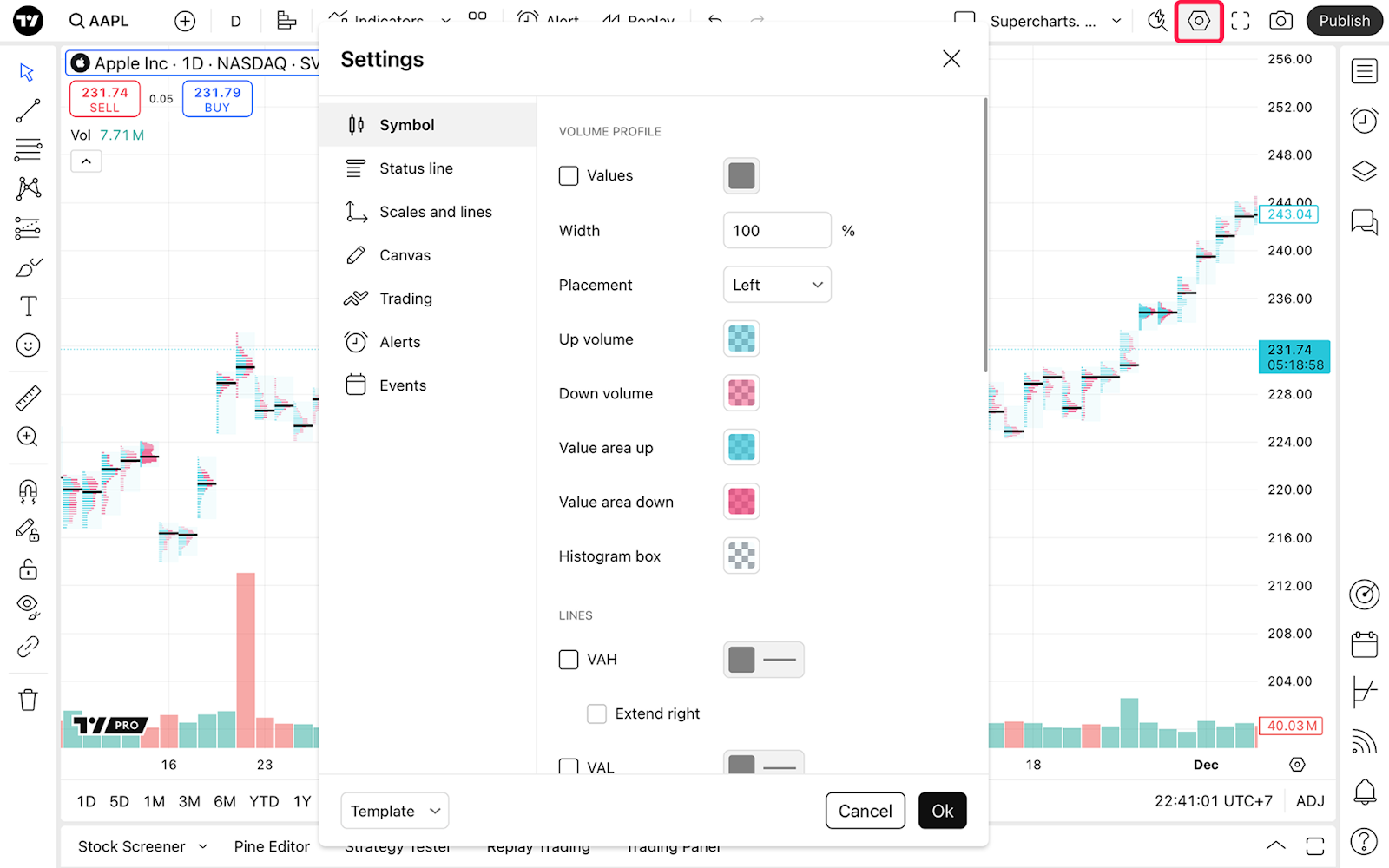Session volume profile charts explained
CONTENTS:
What are SVP charts
Session volume profile (SVP) chart shows volume histograms for the specified sessions, sub-sessions, or time intervals set in the settings. It calculates volume data, allowing traders to analyze the intraday volume activity of one specific part of the session.

Enabling the chart type
Once you are on the Supercharts, open the chart type menu on the upper toolbar, and select Session volume profile.

Settings
To adjust your session volume profile chart, choose "Settings" on the upper toolbar, and go to the "Symbol" tab.

Volume Profile
In the "Volume profile" section, you can enable the display of values on histogram columns, adjust the columns' width, and the colors of the histogram.
- Values: Toggle visibility and set color for the values seen on the chart’s left side
- Width: Alter the width of the columns in the histogram
- Placement: Flip the bars to the left or right of the trading session area
- Up volume: Determine the color as well as opacity for the Up Volume (Buys)
- Down volume: Determine the color as well as opacity for the Down Volume (Sells)
- Value area up: Determine the color as well as opacity for the Value Area Up
- Value area down: Determine the color as well as opacity for the Value Area Down
- Histogram box: Determine the background color as well as opacity for the Volume Profile area
Lines
In the "Lines" section, you can activate lines such as POC (point of control), VAH (value area high), VAL (value area low), developing POC, and developing VA.
- VAH: Toggle the visibility
- Extend VAH right: Extends the line until it crosses any bar
- VAL: Toggle the visibility
- Extend VAL right: Extends the line until it crosses any bar
- POC: Toggle the visibility
- Extend POC right: Extends the line until it crosses any bar
- Developing POC: Toggle the visibility of the, showing you how POC was changing when the market was in session
- Developing VA: Toggle the visibility, showing you how VA was changing when the market was in session
Inputs
You can set up a session in the Inputs section where the volume, line placement, and level size will be displayed.
- Sessions: Determines how the session volume profile chart is built
- All: The indicator will consider the pre-market, main trading session and post-market as one session. One profile will be built for each trading day and it will include the volume for all transactions, starting from the first pre-market candle and ending with the last post-market candle
- Each: Build a separate volume profile for each part of the trading day session, taking into account only deals made during that period. If the symbol has extended hours with pre-market, main session and post-market, the chart will build three separate profiles for each trading day
- Pre-market only, market only, post-market only: With these options, the chart will only build one volume profile per trading day, based on the trades for the specified session period
- Custom: Configure the beginning and end of the period for which the profile will be built. You can also choose a time zone
- Volume: Toggle between showing total volume for each row (total), splitting each row into up/down, or showing their difference (delta)
- Value area volume: Specify what percentage of all volume for the trading session should be highlighted by value area
- Rows layout / row size: Specify the way the chart calculates how many rows each histogram will have
You can read more on how the values are calculated in our article on the Session Volume Profile indicator.
SVP in a nutshell
Session volume profile displays volume histograms for specific trading sessions, showing where the most trading activity occurred at different price levels. The chart reveals which prices attracted the most buying and selling interest throughout the session using horizontal bars.
SVP highlights critical levels like point of control (POC) — the highest volume price — and value area high/low (VAH/VAL) boundaries. You can analyze entire trading days or separate sessions (pre-market, market, post-market) to identify support/resistance zones and market acceptance areas based on actual volume distribution.
Also read: